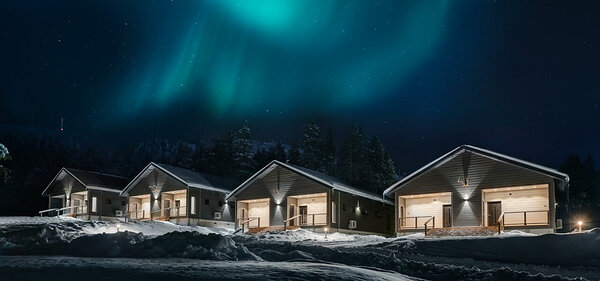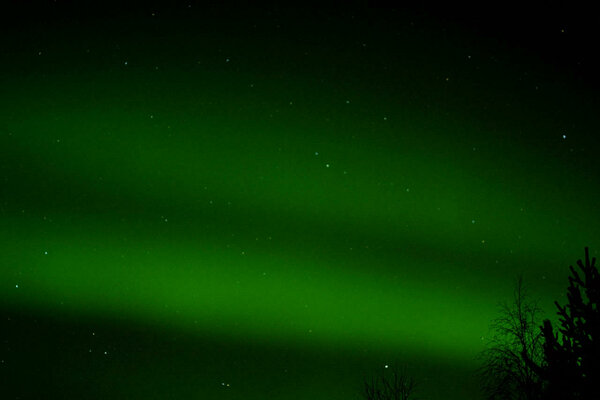If you are lucky, you may see some aurora borealis during your stay. And
what better way to admire that nature wonder than sitting on the
armchair besides the bio fire place in your own warm patio.
One of the biggest attractions of Lapland is the Northern Lights. Anyone who has seen this great nightly show will surely be impressed and the experience will be memorable. Northern Lights can be seen above the Arctic Circle almost every night from October to April, if the weather permits. Sure, the intensity of the northern lights varies a lot, but often the observer of the northern sky is rewarded with at least a small show. Cloudiness is the biggest obstacle to seeing the northern lights, so starry nights are definitely on the wish list of many during their holiday in Lapland.
The Northern Lights are best seen late at night, usually after 10 pm, so you usually have to stay awake little bit later, even after the outdoor activities for the day makes you wanna go sleep early :) Fortunately, there is an Aurora Alert service in the area of Pyhä that will alert you when the Northern Lights are on! So you don't have to constantly try to stare at the sky yourself.
So just warm up your patio's bio-fireplace, settle down on an armchair with a good book and a warm drink and just wait for the Northern Lights to show up. You can download the Aurora Alert to your phone here. The service is open from 1.9 to 31.3
Photography of Northern Lights
Catching a great photo of the Northern Lights is also on many people's bucket list. Getting a good photo of the Northern Lights is not as difficult as it may seem. Here are quick tips for Northern Lights photography!- Be sure to use a tripod to set the camera steady, even the slightest blur will ruin the picture. Lightweight and small tripods for pocket cameras are also available, so you may not need a SLR camera and a sturdy tripod. Your mobile phone might also take a good shot if the camera is mounted on a tripod or otherwise well supported.
- Preferably use the camera's self-timer or remote control, or use the self-timer delay to eliminate possible jitter
- Camera Settings: These are example settings, you can try to find the best ones for your camera and also the one for specific northern lights. The Northern Lights often move either fast or very slowly… Try different shutter speeds depending on the speed of the Northern Lights. If your camera can't adjust to all of these suggested adjustments, try adjusting the camera as much as you can.
- ISO: 400
- Exposure time: 4 seconds (if auroras are very slow, increase the time to 10-13 seconds)
- Aperture: keep your camera's f-number as low as possible, eg 2.8 is already ok if your camera (or lens) bends to it. The 1.4 is a great aperture for depicting the Northern Lights.
- White balance: Any of the daylight settings, either sun or cloudy
- Auto: Shoots manually, that is, with manual control, so turn off auto focus
- Focus: set focus to infinity (mf button on camera)
- With the SLR camera and most camera cameras, all of these adjustments can be changed when the camera is in M mode
- Adjust all settings, especially if you go out into the dark and cold. Inside, warm adjustments are the most comfortable to make. And what better suits it than your own warm terrace :)
Welcome to Parkside Pyhä! Hopefully you can also see the northern lights during your stay.

